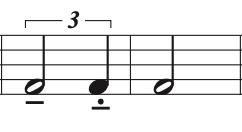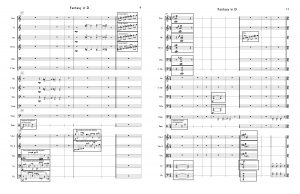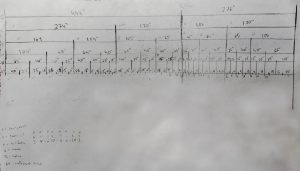Symphony No. 4 “Deconstructing Beethoven” is an exploration into the hypothetical: what if Beethoven were to time-travel to the present and assimilate over 200+ years of musical advancements? How would his compositions sound in this new context? In the second movement, I draw inspiration from the Allegretto of Beethoven’s 7th Symphony, a personal favorite as a bassoonist, particularly for the character of an anguished lament.
In this movement, I employ techniques introduced in the first movement, such as conflicting rhythms that create a palpable tension. The idea was to deconstruct Beethoven’s original piece, distilling the melody to its core and infusing it with an aleatoric character, consistent with the overarching themes of the symphony.

Heart beat rhythm
A key element from Beethoven’s Allegretto, the march rhythm of one long note followed by two short ones, is occasionally referenced. However, I predominantly utilize a heartbeat rhythm, prominently featured in the timpani and bass drum following the opening chord.

Inverted five notes
The five-note rhythm from the first movement is inverted and slowed down, adding a subtly unbalanced rhythmic feel as it morphs into a 3 against 2 pattern. Time manipulation is another technique used, with instruments echoing similar phrases asynchronously. The harmonic language is expanded through the use of whole tone and octatonic scales, along with the addition of “extra” tones to chords for a more modern, richer sound. Beethoven kindly provided me a fugue section, which helps to link this movement with the 4th and some rhythms appear in the 2 moment that reappear in the 3rd. Despite these innovations, Beethoven’s original genius periodically emerges, maintaining a link to the classical source while reimagined in a contemporary light.
II. Allegretto
The SFCCO premièred this movement on May, 28th 2022.




